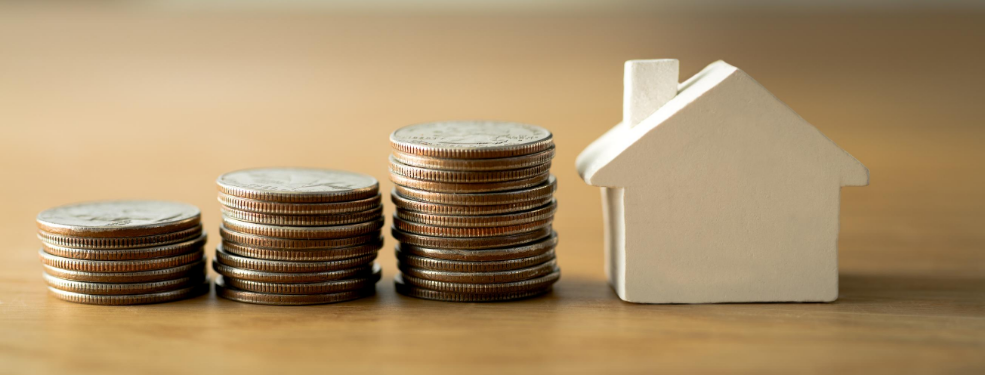The property market was undoubtedly one of the sectors hit hardest by the Covid-19 pandemic, as all transactions were forced to halt from the end of March and couldn’t resume here in Northern Ireland until the middle of June.
There was found to be as high as a 23% drop in transactions for the first quarter of 2020 alone, while the NI Statistics and Research Agency estimated housing sales between April and June could have fallen by as much as 80%.
There are still different views and predictions on how well the market will recover, but in an effort to help it bounce back and encourage buyers the UK government announced on 8th July it would be temporarily waiving certain stamp duty costs for residential properties.
What is Stamp Duty Land Tax (SDLT)?
Stamp Duty Land Tax is an additional fee that normally must be paid when purchasing property or land over a certain value in England and Northern Ireland. This value is known as the threshold. Scotland and Wales have a slightly different system when it comes to this tax. The amount that must be paid depends on the price of the property or land being purchased.
Who has to pay stamp duty tax?
There are different types of property purchases in which the new owner is required to pay stamp duty tax if it is over one of the price thresholds. Those applicable are:
- Buyers of freehold properties – properties which include ownership of the land it is built on.
- Buyers of new or existing leaseholds – properties which will be owned for a length of time agreed with the freeholder, i.e. the lease. Examples can be flats which don’t include ownership of the building they’re in, or a house without the land it sits on.
- Buyers of shared ownership properties – properties which are having a percentage of ownership purchased through a scheme run by an approved public body.
- Recipients of land or property transferred in exchange for payment or non-monetary payment, for example taking on a mortgage. However, SDLT in these cases depends on the circumstances of the transfer.
How is stamp duty normally calculated?
Before 8th July, first time buyers were already not required to pay SDLT for properties under £300,000. Others however may have had to work out what tax they would have to pay if the purchase price (or the “consideration”) was more than £125,000, or they were purchasing an additional or non-residential property.
Various websites offer Stamp Duty calculators to see what the rate would be, including this one from HMRC. There is also specific guidance on when buyers may be able to claim SDLT relief or be exempt for having to pay altogether.
SDLT is calculated using a percentage given to each tax band the purchase price of a property may fall into, which is different again depending on the type of purchase. For example, the tax of a freehold house costing £200,000 would’ve been 0.75%, so the buyer would’ve had to pay a rate of £1,500. A £400,000 home would’ve had £10,000 SDLT to pay, which is 2.5%.
What changes have been introduced?
The major change to Stamp Duty Land Tax brought about by this year’s restrictions is that until 31st March 2021 buyers will not have to pay the tax for main homes up to £500,000. According to Chancellor of the Exchequer, Rishi Sunak in his announcement last month this would affect 9/10 buyers of main homes in the UK.
This includes first time buyers and those who have previously owned a property, but not those buying second homes or additional properties, in the case of landlords buying to let.
Those purchasing properties over £500,000 will only be taxed for the additional amount that exceeds this new threshold. Below we have broken down rates for up until 31st March 2021.
- 0% up to £500,000
- 5% for the next £425,000 (the portion from £500,001 to £925,000)
- 10% for the next £575,000 (the portion from £925,001 to £1.5 million)
- 12% for the remaining amount (the portion above £1.5 million)
For those purchasing additional properties the SDLT is now 3% higher than for each of new tax bands for main homes, until 31st March 2021. This is what the rates now look like:
- 3% up to £500,000
- 8% for the next £425,000 (the portion from £500,001 to £925,000)
- 13% for the next £575,000 (the portion from £925,001 to £1.5 million)
- 15% for the remaining amount (the portion above £1.5 million)
To qualify for any of these rates the purchase must be completed by 31st March 2021. Stamp duty must then be paid within 14 days of completion.
What happens to stamp duty after 31st March 2021?
From 1st April 2021 SDLT thresholds will return to as they were prior to this year’s break, starting at £125,000 for residential properties and £150,000 for non-residential land and properties.
If you are a first time buyer however and the property is under £500,000 you will still be entitled to relief meaning you will have to pay less or no tax at all.
How do I pay Stamp Duty Land Tax?
This is where we come in, as Harry McPartland and Sons Solicitors can organise your stamp duty so that the return is filed and tax paid in full on the very day of your purchase completion, saving you from having to do this yourself. It is worth noting that a return must still be filed even if you do not have to pay stamp duty.
If you have any questions about stamp duty or require legal assistance with moving house then get in touch and book a free consultation with one of our conveyancing experts. Click over to our Domestic Conveyancing page to learn how we can help.

